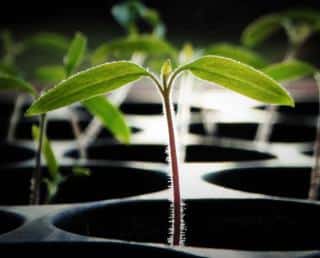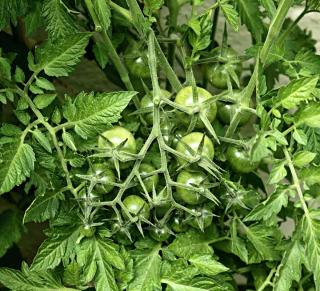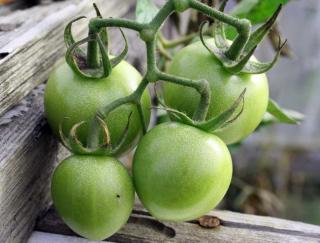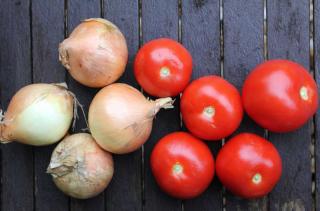

A tomato variety that’s over a hundred years old, the ‘Saint Pierre‘ is one of the tastiest varieties, on par with the more famous ‘Beefsteak’.
Visually similar to cluster tomato, its flesh is firm and gourmet-worthy.
→ Discover: best tomatoes for cooking
The ‘Saint Pierre’ tomato is a French heirloom variety that has been cultivated since the end of the XIXth century. This variety has an indeterminate bearing, meaning it never stops growing; because of this, staking is required. Very vigorous, it’s also among the most productive. Fruits are large, round, fleshy and their peel is smooth. They form in clusters of 4 to 5 tomatoes.
Start your seedlings as early as April, but keep them indoors for fear of late frosts. As for transplanting, it takes place a bit later, towards mid-May.

→ Read also: how to sow tomatoes
After you’ve obtained nice seedlings (perhaps you’ve purchased them in a garden store, which is also fine), the planting itself is fairly easy. Simply dig a hold about eight inches deep (twenty centimeters) and settle the foot down inside it, slanting it somewhat. Then, backfill to the point of burying the base of the stem up to and including the first pair of leaves.
The portion that’s underground will sprout extra roots, giving the plant even more vigor.
On the same day, water abundantly while avoiding wet leaves, and hammer the stakes in.
Saint Pierre tomatoes are relatively easy to care for. The most important thing to watch for is watering:
To retain moisture in the soil, a great recourse is to simply spread mulch.

→ More to learn about growing tomato
As is common for tomato plants, ‘Saint Pierre’ tomatoes may develop blight. Insects also love infesting the plant, as well. Whitefly (tiny white winged flies) and cotton bollworm caterpillars may inflict severe damage if not controlled.

Nonetheless, if ever there are too many for you to consume, you should know they will keep for about 5 days in the refrigerator.

To learn more, read: